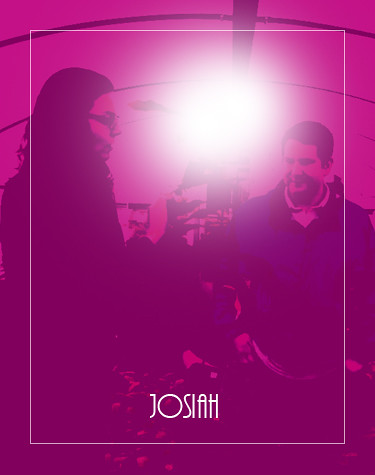
Volume XIV, Issue VI
Josiah
By Bob Kirchman
Copyright © 2018, The Kirchman Studio, all rights reserved
Chapter 6: And there's No One There to Raise Them
An hour or so later, Allison heard voices. Then the two stepped into an open area where the remainder of their colonists stood assembled. A heated discussion was underway about the future of the colony. Men and women who had been subjugated into numbers struggled openly with the task before them of leading the colony. The two Russian doctors had tried to take charge but that had obviously gone badly. There was already emerging a faction that blamed APOLLONIUS and anyone associated with him for the present calamity. Another faction, equally as vociferous, blamed the AAR. The truth was that no one at the moment really trusted either. As Allison and Josiah stepped into their midst, they became silent.
In the reality of farming a new world, it was already obvious that there were those who labored harder than others. It was also obvious that there were those who felt their status allowed them to live off of the labors of others. Here, many miles from Earth, was a scene from the time the Pilgrims set foot in America. The ‘Common Course and Condition’ had resulted in general lack of initiative among the colonists as a group. Josiah stepped forward. Relating the story of his and Allison’s survival, he then suggested a division of labor more in keeping with the flight director’s world that they inhabited. Each colonist would be given a section of greenhouse as their own. They would be responsible for their own sector’s productivity.
Indeed, they would need to cooperate and work together, but Josiah had now insured that each area would have a responsible person over it. In doing so, he unwittingly ‘elected’ himself leader of the APOLLONIUS Colony on Mars.
Josiah then asked how so many of them were in the particular area that survived. Amazingly, all but APOLLONIUS and a couple of launch officers were here intact after an event that might have destroyed them all.
It seems that APOLLONIUS had chosen to launch his missile at the time of an important farming lecture. The whole colony turned out, concerned that they really were confused and they wanted to learn more as a matter of survival. Even the doctors showed up, skeptical of the health claims in the course’s description. They would, they thought, weigh in to discredit it. The result was that the colony itself was quite uninhabited at the time of its destruction. Had APOLLONIUS planned this? That might never be known, for he and his launch technicians perished quite suddenly in the explosion.
Ironically, the basic farming methodology for the colony was from a text known as ‘Squanto’s Garden,’ which had guided the Northern greenhouse culture. It invoked the simple methods of early farmers and avoided heavy use of pesticides.
(to be continued)
Winter Trees
Photos by Bob Kirchman
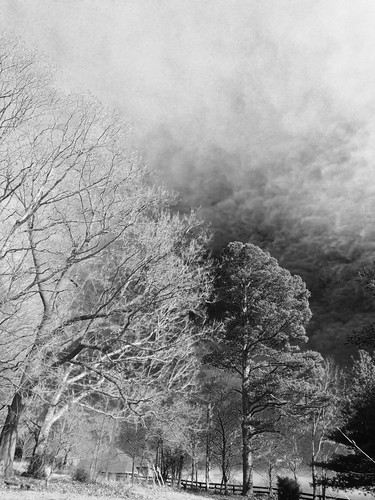


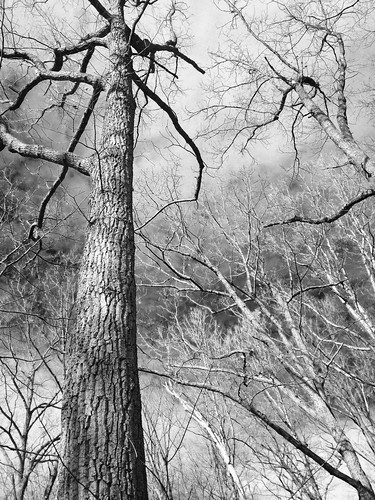

Winter Trees
William Carlos Williams, 1883 - 1963
All the complicated details
of the attiring and
the disattiring are completed!
A liquid moon
moves gently among
the long branches.
Thus having prepared their buds
against a sure winter
the wise trees
stand sleeping in the cold.
For as the rain cometh down, and the snow from heaven, and returneth not thither, but watereth the earth, and maketh it bring forth and bud, that it may give seed to the sower, and bread to the eater: So shall my word be that goeth forth out of my mouth: it shall not return unto me void, but it shall accomplish that which I please, and it shall prosper in the thing whereto I sent it. For ye shall go out with joy, and be led forth with peace: the mountains and the hills shall break forth before you into singing, and all the trees of the field shall clap their hands. Instead of the thorn shall come up the fir tree, and instead of the brier shall come up the myrtle tree: and it shall be to the Lord for a name, for an everlasting sign that shall not be cut off.”
– Isaiah 55:10-13
Harper Goff, Imagineer
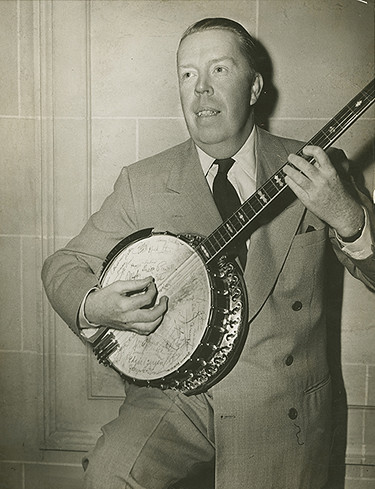
Harper Goff.
In 1951, my wife and I were in London. I was always a miniature train fan, so I went to Bassett-Lowke, Ltd... I was trying to find something I could bring back as an antique. I found one, and the man said, ‘There’s a gentleman coming in this evening who’s shown some interest in that. I can’t sell it to you, because I think he may think it’s being saved for him.’” That is how Harper Goff begins his story of meeting Walt Disney! Indeed Disney came back and bought the train, but he met Goff and got into a conversation with him. Disney offered Harper Goff a job and the rest is history.
Goff was a talented artist, watercolorist, set designer and musician. The Disney organization was a place where he would flourish.
Harper Goff was born on March 16, 1911 in Fort Collins, Colorado. As a boy he was artistic like Disney. After studies at the Chouinard Art Institute he initially became a magazine illustrator. He worked for a while at Warner Brothers before his fateful meeting with Walt.
Disney was embarking on a project to make a full-length feature film of Jules Verne’s 20,000 Leagues Under the Sea and Goff found himself designing the iconic ‘Steampunk’ submarine for the movie. Years later he wrote:
I was assigned the task of getting together a 'true-life' adventure film using some exceptional underwater footage shot in a laboratory aquarium, by Dr. McGinnity of Cal-Tech's Marine Biology lab in Carona Del Mar. Walt (Disney) thought inasmuch as "20,000 L.U.T.S." was in public domain we might do worse than use the title for a current True-Life adventure short subject. Walt went to England and I stayed in Burbank and made a story-board of a live action version of the classic using McGinnity's footage as a sort of ballet episode where Nemo shows Aronax the wonders of the deep. Walt liked the story-board well enough to have me give an 'A.R.I.' (Audience Reaction Inquiry) to a group of exhibitors who were in town. They were enthusiastic and the rest is history.
In motion pictures, the text of a classic like this subject is sacrosanct like the Bible! The 'word' of Jules Verne is not to be made light of, so the duty of the production designer like myself is to take the sometimes arbitary discriptions of the Nautilus as recorded by 'J.V.' and "make it work".
a. Jules Verne while foreseeing brilliantly the atomic submarine of today, did not at that time invent the periscope, the torpedo tube, or sonar. He did not prophesy closed curcut television. According to Verne, if Nemo wanted to see what was going on the surface, he simply poked the glass ports of the conning tower out of the depths and took a direct look. He risked his vessel, himself, and his crew by ramming the enemy at frightening speed. If he wanted to study the marvels of life under the surface, he reclined in his elegent bay window lounge, and passed the hours studying the marine life outside the amazing pressure proof window of his luxurious salon. These items dictated much of the direction of my production designs.
b. Nemo is quoted by Verne as telling Aronax that "I need no coal for my bunkers. I have instead harnessed the very building blocks of the material universe to heat my boilers and drive this craft". No one can doubt Verne meant Atomic Power.
c. It is not sound economics to study and design obviously unnesscessary parts of the Nautilus if it will not appear on screen. The crews quarters were thus unaccounted for. In Verne's original text Nemo from time to time leaves the chart room and steps directly into other diversified areas of the submarine. Directors do not like to slow down the action and clutter up a dramatic moment by showing actors leave a room, lift a hatch, enter another room.
d. At the time Captain Nemo constructed Nautilus on Mysterious Island, the iron riveted ship was the last word in marine construction. I have always thought rivet patterns were beautiful. I wanted no slick shelled moonship to transport Nemo thru the emerald deep and so fought and somehow got my way. On Mysterious Island Nemo had the white hot heat of a volcano to help him build his dreamship, but I am sure that flat iron plates profusely riveted would have been his way. His stock pile of material was always the countless sunken ships uniquely available to him alone. Even the Greek amphora and the works of art that graced his great salon was salvaged from wrecks.
e. The free diving suits - (self-contained) were developed by myself with the assistance of Fred Zender, and exceptionally able underwater man. The helmets were souped-up Japanese pearl diving helmets. We masked the scuba gear, let water into the helmet, put a breathing tube in our mouth, the clamps on our nose and one night in 1952 Freddie and I walked slowly from the shallow end to the deep end of the Santa Monica pool. Lead around our middle and 16 lbs. shoes...it worked! Many had predicted failure. This formed the basis of the suits that appeared in the film. We spent 9 hrs. a day, 7 days a week for 8 weeks at Lyford Key in the Bahamas, underwater! Never lost a man, Fred was in charge of safety.
f. 20,000 Leagues was the second cinemascope picture to go into production. Fox had the worldrights to the anamorphic lenses developed by a French inventor named Cretien. This lense "squeezes" the horizontal dimensions of a scene into half the normal area on a cinema frame. If projected thru an anamorphic projection lense it "unsqueezes" this image and the resulting image is widescreen. Fox had only one lense to lease and this meant that Disney could not shoot miniture set ups while the main action sequences were before the cameras. I hit upon the idea of having the prop miniature shop build a "squeezed" Nautilus miniature. The model was built half as wide and half as long, but just as high. Even the rivets were "squeezed". This one miniature was shot with a normal lense. If care was taken to insure the Nautilus remained on an even keel, the resulting footage was more than adequate. When "unsqueezed" by anamorphic projection, the image of the Nautilus was stretched to normal proportions. Of course the bubbles looked strange, but no one seemed to mind. The success of this experiment made it possible for the special effects department to make its necessary footage of many of the underwater miniatures simultaniously with principal photography of the actors.
g. My idea has always been that the shark and the alligator were the most terrifying monsters living in the water. I there for combined the scary eyes of the alligator that can watch you even when it is nearly submerged....with the dangerous pointed nose and menacing dorsal fin - its sleek streamlining and its distinctive tail. The disgusting rough skin of the alligator is well simulated by the rivets. As Verne insists that the Nautilus drove its way clean threw it's victim, I designed a protective sawtooth spline that started forward at the bulb of the ram and slid around all outjutting structures of the hull. These included the conning tower, the diving planes, and the great helical propeller at the stern.
Sincerely,
Harper Goff”
Goff’s creativity played in a lot of Disney’s projects. He was part of the creation of the original Disneyland Park. Not only did he create the visuals for park attractions, he played banjo with the original “Firehouse Five Plus Two” band. He even earned the ire of Disney as the band, in keeping with their name, began playing sets in front of the fire house on Main Street. Disney’s private apartment just happened to be upstairs in the fire house and Disney did not appreciate the band disturbing his ‘power naps.’
Eventually Harper Goff went on to freelance and designed parts of the great world’s fairs in the 1960s. He returned to Disney in 1975 and created pavilions for Epcot. Harper Goff passed away in 1993 and was awarded the Disney Organization’s highest honor: Disney Legend.

Harper Goff's Nautilus. Disney Photo.
Improving on Jules Verne
This 1962 Film Actually Told a Better Story
[click to read more]
Jules Verne’s first published novel was Five Weeks in a Balloon. It details an expedition across Africa and was very well received by his readers. It reads more like a travelogue than an adventure though. Verne’s publisher, Jules Hetzel, would later ask him to include more adventure and even romance in later works. The story of Aouda, the woman Phineas Fogg rescues in India, is in answer to that criticism.
The Twentieth Century Fox film, made in 1962, adds adventure and romance to Verne’s original novel. Rather than a mapping expedition, the trip as rewritten in Irwin Allen’s screenplay becomes a race to stop slavers from occupying a piece of territory. The cause becomes more heroic. (read more)
The EPCOT Never Built
Disney's Unrealized Magnum Opus
Walt Disney died before he could begin construction on what might have been his Magnum Opus. His brother Roy continued his plan to build the Florida Magic Kingdom and EPCOT eventually was built as a permanent world’s fair. Look at these renderings and models, however, and it is quite clear that Walt had bigger things in mind when he laid out the concept for his Experimental Prototype Community of Tomorrow.
The Original EPCOT Vision [click to view]
Conference on Rural Prosperity
White House Conference Addresses Heartland Issues
[click to read more]
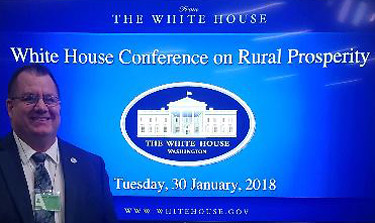
Terry Kelley, Beverley Manor Magisterial District Supervisor attends the White House Conference on Rural Prosperity.
How do we arrive at such things as the lowest minority unemployment rates in history and a strengthened economy in the Heartland? Behind the scenes work like this conference attended by Beverley Manor Supervisor Terry Kelley are part of the process of returning America to the people who make her robust. (read more)
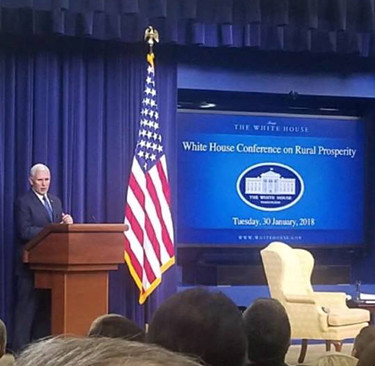
Vice-President Mike Pence addresses the delegates.
Bright Light in Darkest Hour
[click to read more]
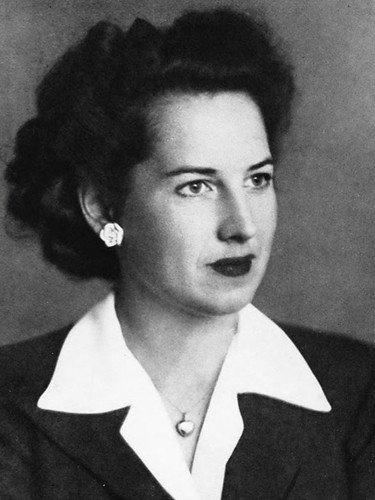
Elizabeth Layton Nel, Churchill's wartime secretary.
This past weekend I saw ‘Darkest Hour,’ Joe Wright’s film about Winston Churchill in May of 1940 and his facing the challenge of Europe’s fall and the immanent threat of invasion faced by Great Britain at the beginning of World War II. It is a wonderfully inspiring story of a great and flawed man who was indeed the man history needed in a time so overwhelming. Gary Oldman is very convincing as Churchill. His rendition of the “Blood, Toil, Tears and Sweat” speech to Parliament had me fully invested in the story. (read more)
